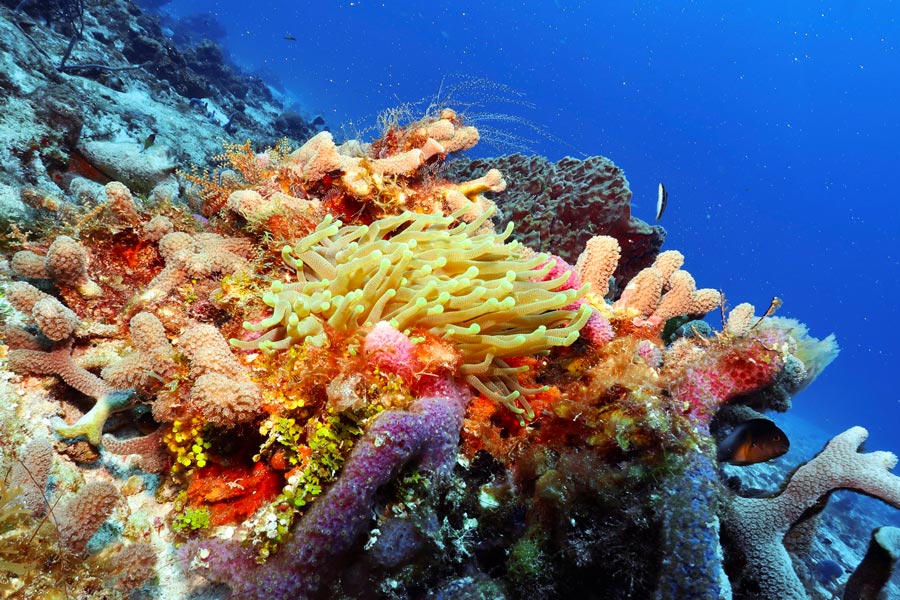The 8 Best Cozumel Reefs for Scuba Diver Enjoyment
Let’s be honest. There is not a bad reef in Cozumel.
So… which criteria determine the best reefs in Cozumel? Easy. The ones you are most interested in and those you are looking for more info on.
8 of the top 10 most searched Cozumel reefs on the internet are on the Dressel Divers dive schedule and are only a 10-15 minute by boat from our base.
1. Palancar Reef
This little piece of underwater heaven is southeast of the island and only 2 km/ 1 mi. from the coast.
More than 5 km long, Palancar is the reef of Cozumel that awakens more interest among divers, and there are several reasons for this.
The first is its giant coral formations, breathtaking for how beautiful, colorful, and large they can be.
The second is because there is not a single reef there are 4.
– Palancar Gardens 10 – 25m /30 – 80ft
– Palancar Caves 12 – 37m/40 – 120ft
– Palancar Bricks 15 – 27m/ 50 – 90ft
– Palancar Herradura 15 – 27m/ 50 – 90ft
At Palancar Reef you can practice drift diving, deep diving and snorkeling.
These reefs in Cozumel can be as high as a 30-story building. But full of inhabitants. Corals mingle with purple to orange sponges, fans, and gorgonians, making them home to hundreds of species of fish, turtles, and tropical mollusks.
With over 60 m / 200 ft visibility and a moderate current, underwater photography is a dream come true on this Cozumel reef.
If you want to know more about the Palancar reefs in Cozumel, we invite you to read Palancar Reef, a Paradise For Scuba Divers














